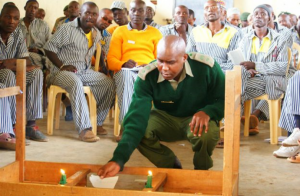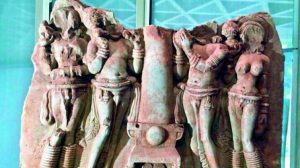Editor’s note: “Teachings of Amitabha Buddha” is an inspiring column about the vital spiritual matters of Pure Land Buddhism – from its history, philosophy, and practice to its scriptures and their exegesis and interpretation. The column is penned by Alan Kwan, the founding editor of Buddhistdoor.com.
In the Commentary on the Contemplation Sutra, Master Shandao highlighted that the door to the Pure Land is opened by the two teachings of two Buddhas. We learned that one is known as the Path of Importance taught by Shakyamuni Buddha, and the other is the Path of Great Vow by Amitabha Buddha with his alternative intent.
In this installment, we will discuss the differences in principle between these two teachings in Pure Land Buddhism.
Pure Land, Pure Mind
Here is a famous saying in the Vimalakirti Sutra: “A Bodhisattva who wishes to attain pure land will simply purify his mind. Following the purification of his mind, the Buddha land is then pure.” This is how Bodhisattvas attain Pure Land through the purification of their mind.
The emphasis of Shakyamuni Buddha’s teaching is the purification of mind too. It is reflected by the common verse of Seven Buddhas of the Saha World:
Don’t do anything evil,
Be good and righteous in due diligence,
Purify one’s mind,
That is what the teaching of all Buddhas is all about.
As most Buddhists know, all phenomena in our world are the manifestations of mind, including the land (external environment) and the body (internal beings). It is encapsulated as, ‘three domains are mere mind, and all Dharmas are mere consciousness.” In our world, the evolution or transformation of both land and body is governed by the principle of causal conditions, or the principle of karma. This is the universal truth in all phenomenal worlds, like the Saha World.
There is no doubt that if one’s mind is pure (through the meditative practices), one’s body and one’s dwelling place are pure too. Similarly, if one’s body is pure (through taking the pure precepts), one’s mind and the place in which one dwells are pure too. Therefore, if one can dwell in the Pure Land, his mind and body are pure as well. This is the reason why Amitabha Buddha asks us to aspire to be reborn in his Pure Land, if we wish to attain a pure body and pure mind.
The relationship between mind, body and land is three-in-one. They are interrelated and interdependent. The situation is similar to center, left and right. Without left, there is no right, and vice versa. However, there must be a reference line called the center in between left and right. These three must be co-existent. With the absence of any of them, the idea of left and right is meaningless.
A quiet and peaceful environment helps our mind grow calm, pacified, and more easily purified during meditation. If one cannot purify one’s mind through meditation, one can choose to be reborn in the Pure Land with the great vow and pure karmic power of Amitabha Buddha as an augmentative cause. This is the alternative intent of Amitabha Buddha, who created the Pure Land for the sake of delivering sentient beings. Purity is the base of all Buddhist practices, whether in mind, in body or in land.
Knowing that we can be purified in mind and body by dwelling in the Pure Land, we may ask how we can be reborn there without clearing our delusions or purifying our minds like Bodhisattvas. That is the reason why we must rely on the ‘other-power,’ the great vow and pure karmic power of Amitabha Buddha as an augmentative cause.
Master Shandao answered this question in his Commentary on the Contemplation Sutra:
Question: Amitabha Buddha and his land is said to be in the form of reward. The Dharma of reward [in body and land] is superior and wonderful. It is difficult even for Arhats and Bodhisattvas to enter. How can an ordinary being with heavy and impure karmic obstruction be reborn there?
Answer: Taking into account the heavy and impure karmic obstruction of sentient beings, it is really difficult for them to be reborn there. By entrusting themselves to the Buddha’s vow as an augmentative cause, all beings in the Five Vehicles can enter together on an equal basis.
This statement clearly indicates that no being, including the great Bodhisattva, can be reborn in the Land of Bliss without the augmentative cause of Amitabha Buddha’s great vow and pure karmic power. It also concludes that Pure Land Buddhism is basically the teaching of ‘other-power’ because the principle of rebirth for all beings in the Pure Land is governed by the Buddha’s vow as no other cause than the augmentative cause.
How to reach and benefit sentient beings in the ten directions
Another question is how Amitabha Buddha reaches and benefits sentient beings. How does he deliver sentient beings in the ten directions and in guaranteeing their rebirth in the Pure Land? Master Shandao summarized this entire process and the principle of Pure Land Buddhism in his book, In Praise of the Rite of Rebirth. He said, “The honorable Amitabha set forth an extremely serious vow. He teaches and delivers the sentient beings in the ten directions with his name in the form of his light. It enables them to have faith, aspiration and practice in Amitabha-recitation. Whoever recites till the end of his life, or even ten times, or just one time, can be easily reborn by the power of his great vow.” The deliverance is carried out under the principle of his name in the form of light.
Master Shandao combined two statements, one from the Amitabha Sutra and the other from the Contemplation Sutra, and said in the In Praise of the Rite of Rebirth, “Buddha’s light is infinite, illuminating all lands in the ten directions without any obstructions. He contemplates only the Amitabha-reciters, and embraces them without renunciation. That is the reason why he is called Amitabha.”
In this respect, all Pure Land practitioners who recite exclusively Amitabha’s name can receive Amitabha’s substantial, pure and flawless merits and virtues in the form of light. It facilitates them to be reborn in the Pure Land. This is the governing principle in the entire process of deliverance by Amitabha Buddha.
According to the Great Collection of Moon Store Sutra, all Buddhas have four ways to teach and deliver sentient beings. First of all, they preach the Dharma through their mouth. Secondly, they show their brilliant celestial bodies for the sentient beings to contemplate. Thirdly, they deliver them through manifestations by their supernatural power. Lastly, they deliver the sentient beings by their name. Whoever recites the Buddha’s name earnestly will benefit by having his karmic obstruction nullified, and will appear in front of the Buddha, meeting him face-to-face.
What is the significance of the ‘name’? It is in the form of light, and is regarded as the Dharma body of the Buddha. It also represents the Buddha’s remarkable merits and pure virtues that he dedicates to the sentient beings who recite his name. The merits and virtues of his name and the fundamental vow enable the reciters to be reborn in his Pure Land. This is the Pure Land teaching of Amitabha Buddha.
Virtuous Roots in Faith and Virtuous Roots in Wisdom
As discussed in the last article, Shakyamuni Buddha’s teaching is focused on the Three Studies: precepts, meditation and wisdom. On the other hand, Amitabha Buddha’s teaching is focused on the ‘Three Sambhara’: faith, aspiration and practice. It would seem that the approach of the two teachings is different – one for wisdom at the end and the other starting from faith. Actually, the result of pursuing wisdom and developing faith is more or less the same because both wisdom and faith are regarded as virtuous roots.
In Buddhism, the five virtuous roots are faith, vigor, invocation, meditation, and wisdom. They are called ‘roots’ because all virtues can grow under these five favorable conditions. In other words, if one possesses virtuous root in wisdom, one can understand and accept the sages’ sayings, and one’s virtues will grow rapidly in meditative or non-meditative practices. Alternatively, if one possess virtuous roots in faith, one can develop deep faith upon hearing the sages’ words, and attain the same rewards in virtues.
It is important to note that faith is the fundamental practice for all Pure Land practitioners. Developing faith is also the expedient means to achieve rebirth in the Pure Land, instead of pursuing wisdom through meditative virtues. Master Shandao said in the Commentary on the Contemplation Sutra that faith can be developed through the five exclusive invocations of Amitabha, especially oral Amitabha-recitation.In the Infinite Life Sutra, all beings in the Land of Bliss will naturally be born and blessed with great wisdom and all penetrative paranormal powers. However, if one practices miscellaneous merits and virtues with doubts in Buddha’s wisdom, one will be unfortunately reborn inside the lotus buds of the Pure Land. In the Land of Bliss, one’s lotus flower will blossom only if one fully develops faith in the Buddha’s wisdom. All Pure Land practitioners should note that they should only focus on the virtuous practice in faith through Amitabha-recitation all the way in the pursuit of Buddhahood.










